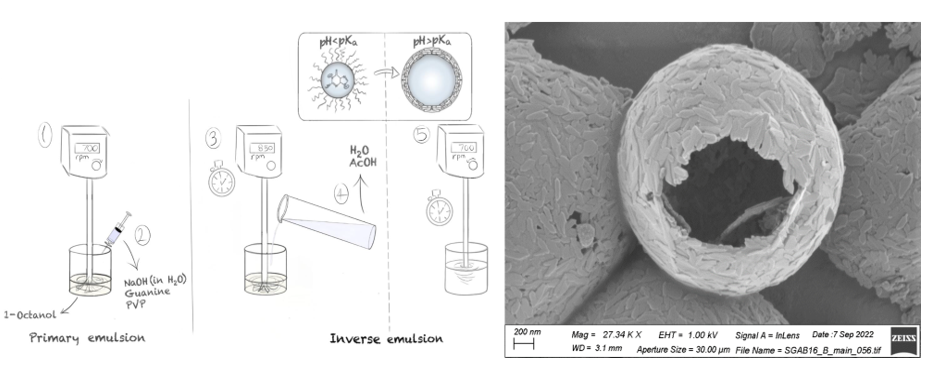A controllable method for synthesizing organic, crystalline spherulites from compounds with guanine-based structures. The resulting spherulites are birefringent, having a very high refractive index (RI) in the azimuthal direction and a very low RI in the radial direction, making them excellent broadband scatterers that produce “whiteness.” The technology is a way to produce safe alternatives to common pigments such as titanium dioxide, which is a suspected carcinogenic that has been banned as a food additive in the European Union.
- Paints and coatings
- Food coloring
- Cosmetics
- Plastics
- Ink and tattoo pigments
- Supplements
- Medicine
- Toothpaste
- Non-toxic
- Biocompatible
- Can be applied to a range of materials
The researchers demonstrated the invention with two guanine-based compounds, and a patent was filed. Future technological efforts will focus on biocompatibility tests and exploration of new materials.

Left: Scheme showing the stages of the crystallization process;
Right: SEM image of a broken spherulite produced by mechanical and magnetic stirring



